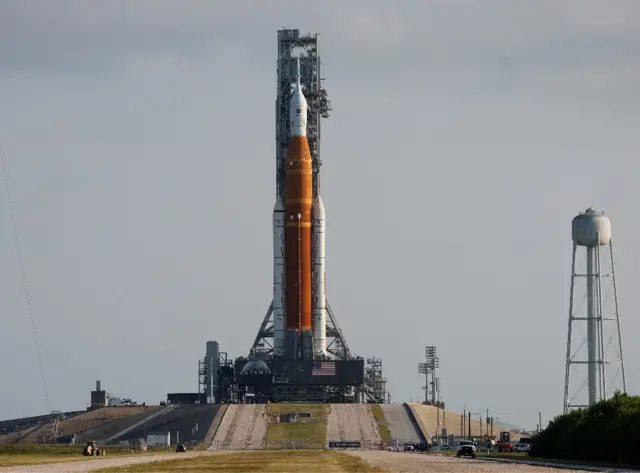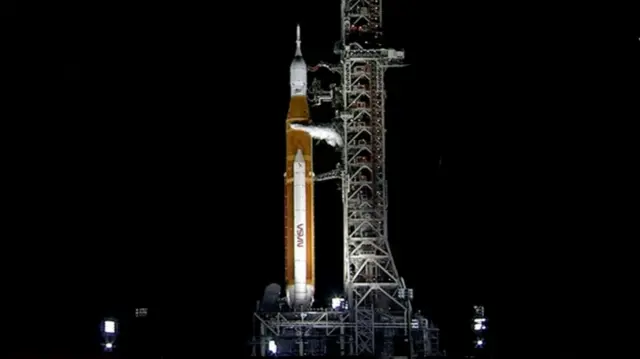WATCH: A guide to Nasa's mega Moon rocketpublished at 12:35 BST 29 August 2022
Fifty years after the Apollo Moon landings, Nasa is getting ready to send humans back to the lunar surface.
The first step is today's uncrewed test flight of its colossal new rocket – the Space Launch System.
Watch the video for in-depth look at how the technology will work from our science editor, Rebecca Morelle.
Watch the full documentary Return to the Moon on iPlayer here.




